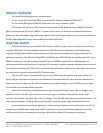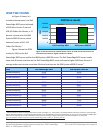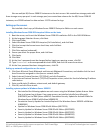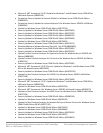
A Principled Technologies test report 3
Virtualized database performance comparison: Dell PowerEdge
R815 vs. IBM System x3850 X5
configuration, with the exceptions we note in the Setting up DVD Store section in the How we tested section
of this report.
Each client machine ran a single instance of DS2, with 32 threads. This simulated a heavily loaded
environment; the load-generating client machines ran with no think time, blasting requests as quickly as the
servers could handle them.
The DS2 driver application creates an orders-per-minute performance counter on the client VM. While
the DVD Store client application outputs OPM at 10-second intervals visually, we chose to collect this OPM
metric by using the last recorded OPM amount displayed by each client. We ran this workload on the both
servers’ virtual machines simultaneously for 30 minutes.
For more details about the DS2 tool, see http://www.delltechcenter.com/page/DVD+Store.
SYSTEM COMPARISON
Figure 1 shows a side-by-side comparison of the key hardware differences between the test servers.
We used the maximum speed memory supported by both architectures, which is 1,333 MHz (PC3-10600R) for
the AMD Opteron 6100 series processor and 1,066 MHz (PC3-8500R) for the Intel Xeon 7500 series processor.
Appendix A presents detailed system information.
Hardware specifications
Dell PowerEdge R815
IBM System x3850 X5
CPU
AMD
Intel
CPU speed (GHz)
2.20
2.26
Number of processor packages
4
4
Number of cores per processor
package
12
8
Number of hardware threads per
core
1
2
Memory type
PC3-10600R
PC3-8500R
Total memory (GB)
256
256
Figure 1: Key hardware differences between the two test servers.
Figure 2 shows the settings we used on the VMs for testing. Refer to the How we tested section below
for detailed steps of how we set up the VMs.
VM specifications
Dell PowerEdge R815
IBM System x3850 X5
Number of vCPUs
1
1
Memory (GB)
5
5
Number of virtual disks
4
4
Figure 2: VM configuration information for the test servers.


















